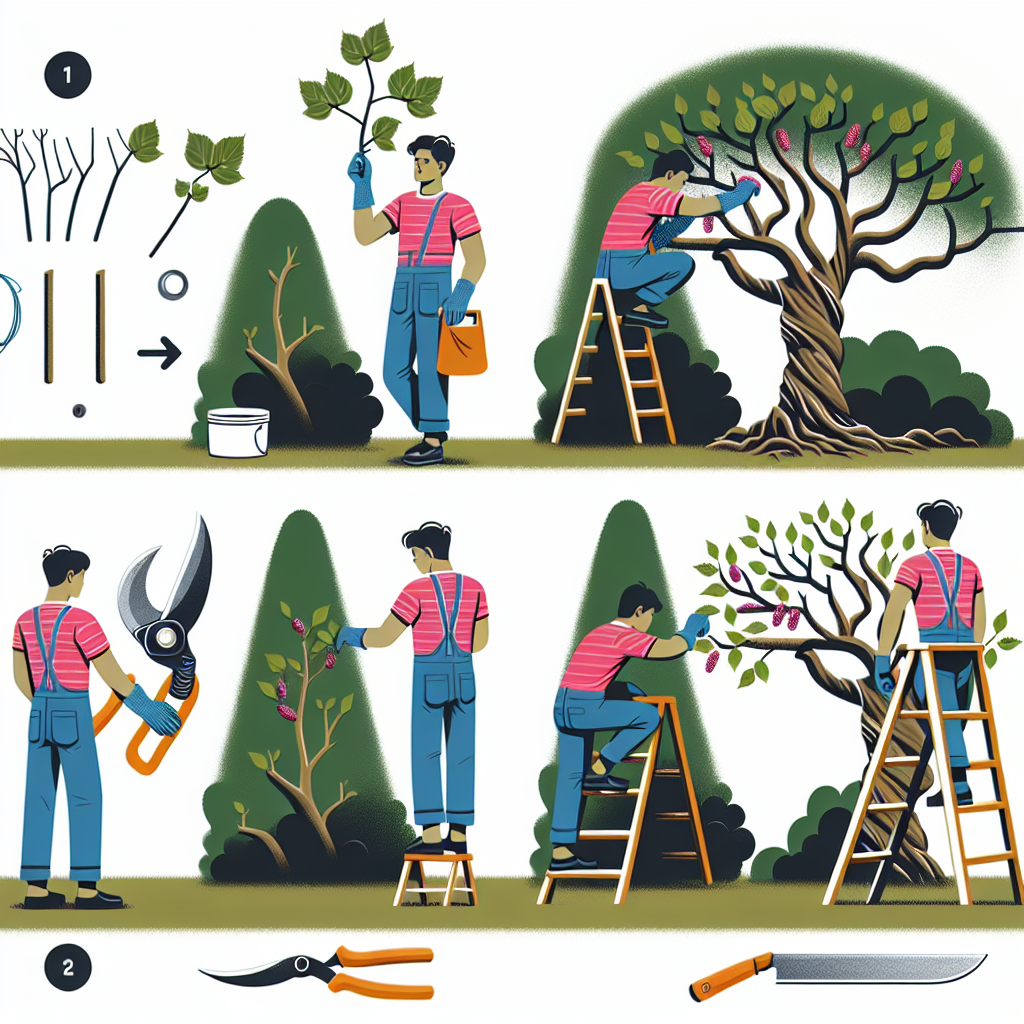
How to trim a mulberry tree
How to Trim a Mulberry Tree: A Comprehensive Guide
Trimming a mulberry tree can be an essential part of maintaining its health, productivity, and aesthetic appeal. These trees, known for their sweet, delicious fruits, can sometimes become unruly or overgrown. Knowing how to trim a mulberry tree effectively ensures that you will enjoy its benefits for years to come. In this guide, we will explore the reasons for trimming, the best time to do it, essential tools, techniques, and much more.
Why Trim a Mulberry Tree?
Understanding the importance of trimming your mulberry tree can motivate you to take on the task. Here are several reasons why you should consider trimming:
- Health Maintenance: Regular trimming promotes better air circulation and sunlight penetration, reducing the risk of diseases.
- Improved Fruit Production: Removing dead or overcrowded branches encourages more fruit-bearing growth.
- Aesthetics: A well-trimmed tree looks more attractive and can be shaped to fit your landscape design.
- Manage Size: Trimming helps control the size of the tree, making it easier to harvest its fruit and maintain.
- Safety: Removing weak or compromised branches can prevent potential hazards during storms.
When is the Best Time to Trim a Mulberry Tree?
The timing of your trimming efforts plays a crucial role in the effectiveness of the process. Here are some key points to consider:
- Late Winter to Early Spring: The best time to trim your mulberry tree is when it is dormant, typically in late winter or early spring before new growth starts. This timing minimizes stress to the tree.
- Post-Harvest: For trees that have already produced fruit, consider trimming immediately after harvesting to help the tree focus on recovery.
Essential Tools for Trimming a Mulberry Tree
Having the right tools on hand is vital for successful trimming. Here’s a list of recommended tools:
- Pruning Shears: Ideal for small branches and detailed cuts.
- Loppers: Suitable for medium-sized branches that are hard to reach.
- Saw: A small hand saw or chainsaw may be necessary for larger branches.
- Safety Gear: Gloves, goggles, and a hard hat to protect yourself during the process.
- Ladder: To reach higher branches safely.
Techniques for Trimming a Mulberry Tree
Effective techniques can make the trimming process smoother and more beneficial for your tree. Here are some steps to follow:
1. Assess the Tree’s Structure
Before you start trimming, take a good look at your tree. Identify any dead, diseased, or crossed branches that need to be removed. Understanding the tree’s natural shape will also help you maintain its form during trimming.
2. Start from the Bottom
Beginning your trimming from the bottom allows you to see the overall structure more clearly, making it easier to identify areas that need attention.
3. Remove Dead and Diseased Branches
Use your pruning shears or saw to carefully remove any dead or diseased branches. Be sure to cut them back to healthy tissue to encourage new growth.
4. Thin Out Dense Areas
If your mulberry tree has many crowded branches, selectively remove some to improve airflow and light penetration. Aim for a balance to keep the tree looking full yet not overcrowded.
5. Shape the Tree
Establish a shape that fits your landscape. Pay attention to the tree’s natural growth pattern and avoid cutting too much from the top, as this can stress the tree.
6. Clean Up
After trimming, gather the cut branches and leaves. Dispose of any diseased material to prevent spreading infections.
Common Mistakes to Avoid
Trimming a mulberry tree can be straightforward, but avoiding common pitfalls is crucial for the health of your tree. Here’s what to watch out for:
- Over-Trimming: Cutting too much can stress the tree, leading to poor growth or even death.
- Neglecting the Tools: Dull tools can lead to jagged cuts that harm the tree. Always ensure your tools are sharp and clean.
- Ignoring Tree Health Signs: If your tree exhibits unusual symptoms, consult a tree care professional rather than proceeding with trimming.
- Trimming at the Wrong Time: Avoid trimming during active growth to minimize shock to the tree.
Benefits of Properly Trimming Your Mulberry Tree
When performed correctly, trimming your mulberry tree can lead to various benefits:
- Higher Yield: With better light and air circulation, your tree will produce more fruit.
- Healthier Tree: Regular maintenance reduces the risk of diseases and pest infestations.
- Longer Lifespan: A well-cared-for tree can thrive for many years, providing joy and fruit for generations.
- Improved Landscape: A well-shaped tree can enhance the visual appeal of your yard.
Conclusion
Understanding how to trim a mulberry tree is essential for anyone looking to maintain the health and productivity of this wonderful fruit-bearing tree. By following proper techniques, using the right tools, and avoiding common mistakes, you can ensure your mulberry tree remains healthy for many seasons. Remember, regular maintenance is key to enjoying the fruits of your labor and the beauty of your landscape.
With this guide, you have all the information you need to get started on your trimming journey. Happy gardening!
By Guest, Published on August 9th, 2024